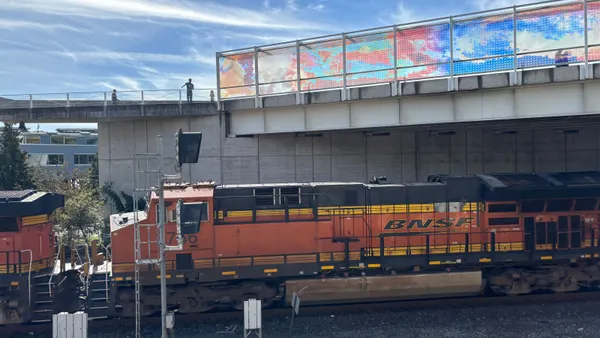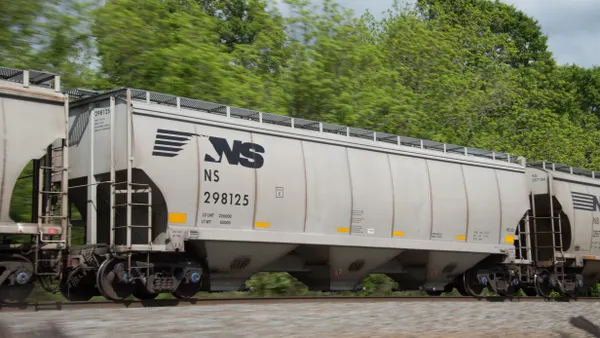Dive Brief:
- Union Pacific improved its service metrics despite a double-digit drop in volume in the second quarter, executives said on an earnings call Thursday. Total volume declined 20% year over year for the quarter, with automotive freight seeing the largest drop.
- Intermodal trip plan compliance was up 13% year over year for the railroad in Q2, coupled with four fewer hours of dwell time per car. "This is a direct result of our focus on improving network efficiency and service reliability as part of our operating model," said Union Pacific COO Jim Vena. The railroad's redesign of its Chicago intermodal operations will be complete by the end of 2020, he said.
- The railroad is forecasting a 10% year-over-year drop in total volume for the whole of 2020, "assuming we maintain a consistent volume trend and we do not experience the second wave of economic shutdowns," CFO Jennifer Hamann said.
Dive Insight:
With their relatively positive forecast, Union Pacific executives are suggesting volumes will continue to build throughout the year, though they did not commit to a predicted cadence when asked on the call.
"How it breaks out quarter-to-quarter is something that is very difficult to estimate right now," said CEO Lance Fritz. The volume dip the railroad saw in the second quarter was short of the 25% loss executives predicted in April.
While Union Pacific's Q2 volume change is in line with the other Class Is that have reported so far this cycle, it is the only railroad so far to post positive trends in the service metrics common within the precision-scheduled railroading (PSR) philosophy.
As volume returned to the railroads in June, many struggled to ramp up capacity fast enough to meet it, causing some decline in trip plan compliance and an uptick in dwell times. Union Pacific had a 22% smaller workforce as of June 30 compared to the same period last year, and attributed its improved trip plan compliance and dwell metrics in part to running longer trains, leading to fewer train starts.
"There's less network congestion on average anywhere you look ... so that allows each train more free running time and it really makes the network a little easier to dispatch, and that translates into a service product," said Fritz.
The railroad is now in the process of building up capacity for the volume growth it expects through the balance of the year, but executives emphasized it will not be building back to the exact level of workforce or equipment it had working the railroad pre-pandemic.
"What we figured out was we can do more with less and even more than we thought," Vena said, explaining the railroad cut workforce faster than the volume decline in the first quarter and will build it back slower than it returns in the third and fourth.














